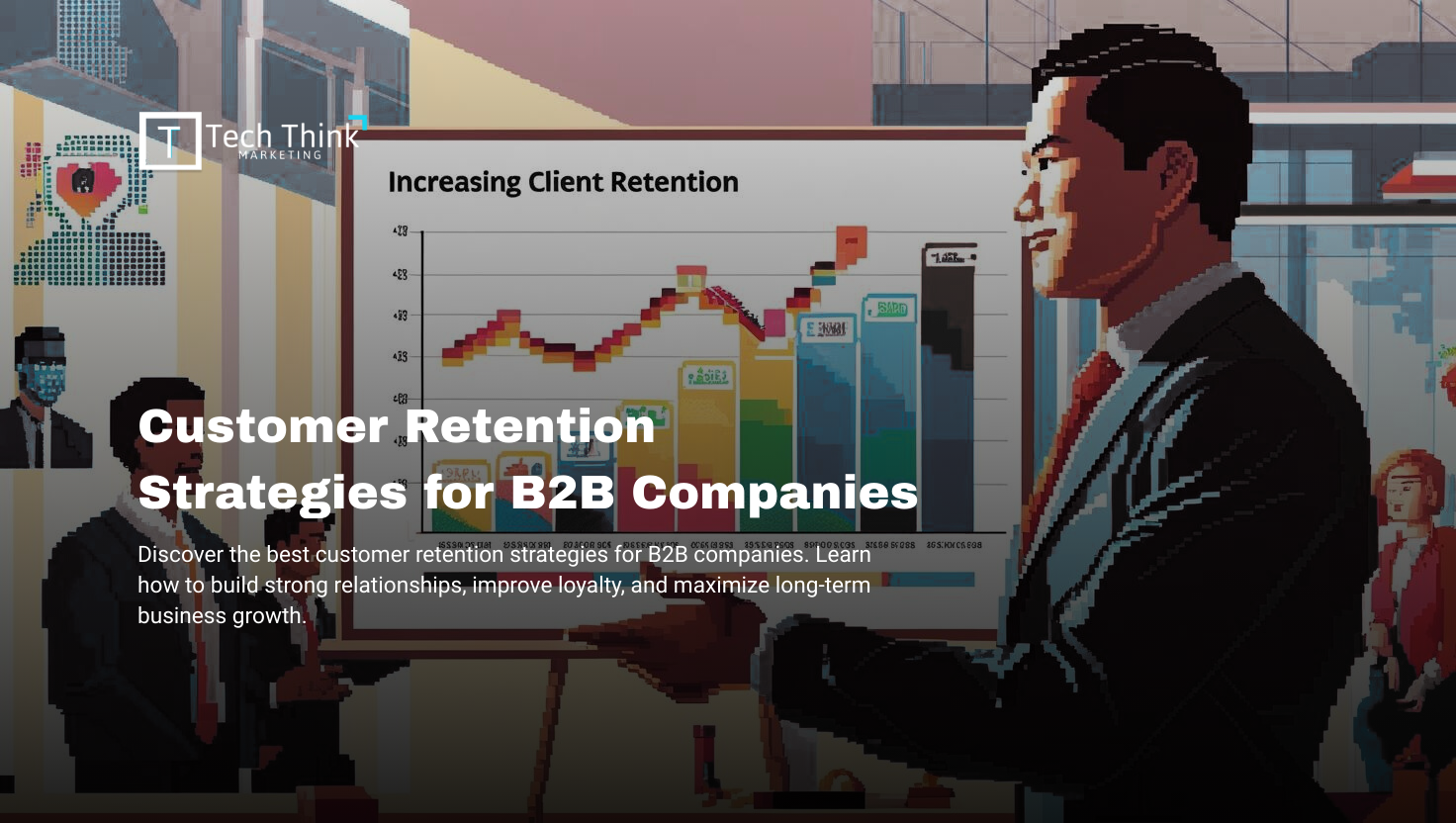Office No. 608, Lunkad Sky Station, Viman Nagar Road, Pune, Maharashtra 411014, India
Phone: +1 213-261-0597
contact@techthinkmarketing.com
customer retention strategies B2B Companies In today’s competitive market, it is important to get new customers, but it is even more important to maintain existing people – especially for B2B companies. Research shows that improvement of customer inventory can only increase from 5% to 95% profit. Unlike B2C, where purchases are often fast and emotional, B2B conditions are made on trust, long -term value and strong participation.
This blog examines top customer stock strategies for B2B companies in 2025, providing action -rich insights that can help you strengthen your customer relationship and maximize growth.
Table of Contents
ToggleWhy Customer Retention Matters in B2B
B2B Companies Let’s understand why the maintenance of B2B is so important before you dive into strategies:
- High Life Price (LTV): B2B customers often provide recurrent revenues through contract or membership.
- Reduction in procurement costs: A new customer costs 5-7 times more than maintaining an existing one.
- Reference and lawyer: Satisfied customers become branding attorneys, who help you win a new business.
- Sustainable development: Faithful customers constantly have income and stability.
Let’s look at the best ways to achieve this.
1. Deliver Exceptional Onboarding
B2B Companies Constant, transparent communication is the backbone of B2B storage.
How to improve communication:
- Plan regular check -in (monthly/quarterly business review).
- Use customer relationship management tools (CRM) to track interactions.
- Regular industry updates, insights and personal reports.
- Provide a clear growth path for problems.
It is less likely that customers who feel valuable.
3. Personalize Customer Experiences
B2B Companies B2B buyers expect the same personalization level as B2C likes customers. Privatization creates self -confidence and strengthens relationships.
Best practice:
- The customer adapts the recommendations based on industry and goals.
- Send matching e -mail messages with relevant material and solutions.
- Customers Section by size, requirements and preferences.
- Use data analysis to estimate the customer’s needs.
When customers see your company understands their unique challenges, loyalty increases.
4. Provide Continuous Value
Storage comes from proving your product or service that it continuously yields returns.
Ways to give value:
- Share the stories of the study and success of the case.
- Update customers about new features or services regularly.
- Provide special access to insights, white -pappers and reports.
- Organize workouts and webinars.
The higher the value you give beyond the first sale, the stronger the customer relationship.
5. Invest in Customer Success Teams
Unlike customer support, customer success teams proactively ensure that clients achieve their goals with your solution.
Customer success strategies:
- Track metrics like adoption rate, usage frequency, and satisfaction scores.
- Offer proactive solutions before issues escalate.
- Celebrate client milestones and achievements.
- Align success teams with client business objectives.
A proactive approach makes clients feel like partners rather than transactions.
6. Implement Loyalty and Reward Programs
Even in B2B, incentives work. Recognizing loyalty goes a long way.
Ideas for loyalty programs:
- Discounts on contract renewals.
- Exclusive access to premium features.
- VIP invitations to networking events or conferences.
- Co-marketing opportunities with loyal clients.
Rewarding clients strengthens long-term partnerships and increases retention.
7. Collect and Act on Feedback
Clients want to feel their voices matter. Actively gathering and implementing feedback helps build stronger trust.
Feedback methods:
- Conduct Net Promoter Score (NPS) surveys.
- Organize quarterly satisfaction reviews.
- Set up client advisory boards.
- Use AI tools to analyze customer sentiment.
More importantly, act on the feedback—this demonstrates commitment to customer success.
8. Use Technology and Automation
Automation can simplify and enhance the customer experience.
Examples of retention-focused tools:
- CRM platforms (HubSpot, Salesforce) for tracking relationships.
- Email automation for personalized follow-ups.
- Customer analytics tools to measure churn risks.
- AI chatbots for 24/7 support.
When technology supports human interaction, retention improves significantly.
9. Foster Strong Relationships with Decision-Makers
In B2B, decisions are made by committees, not individuals. Retaining a client means building relationships across multiple levels.
Relationship-building strategies:
- Stay connected with both executives and end-users.
- Offer tailored content for different stakeholders.
- Invite clients to leadership roundtables or industry events.
- Maintain professional yet approachable communication.
A wide network within a client organization makes it harder for competitors to replace you.
10. Monitor and Reduce Churn
Lastly, proactive churn management is essential.
How to reduce churn:
- Track warning signs (low usage, late payments, decreased engagement).
- Reach out before contracts end.
- Offer flexible pricing or upgrades to meet changing needs.
- Analyze churn reasons to prevent future losses.
Churn prevention is more cost-effective than replacing lost clients.
Conclusion
For B2B companies, customer retention is not just a strategy—it’s a necessity. In 2025, businesses that prioritize retention will see stronger growth, deeper relationships, and higher profitability.
To recap, the top customer retention strategies for B2B companies include:
- Effective onboarding
- Strong communication
- Personalization
- Continuous value delivery
- Customer success teams
- Loyalty programs
- Feedback loops
- Technology adoption
- Multi-level relationship building
- Churn management
By implementing these strategies, your business can turn clients into long-term partners, ensuring sustainable success in an increasingly competitive B2B landscape.





